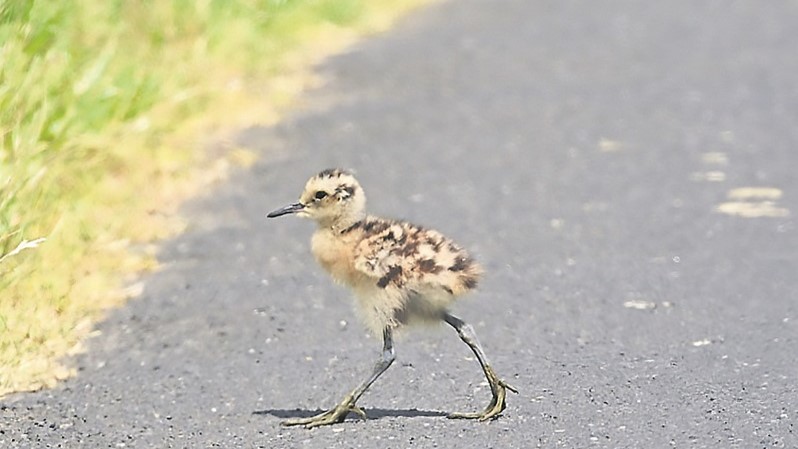BREEDING results for the curlew this season have seen a huge turnaround locally, with a record number of chicks fledged for the endangered species.
Once facing the threat of extinction, this species is now on the path to recovery, thanks to the Curlew LIFE project and the work of dedicated RSPB NI staff and local farmers.
Curlews are threatened globally and in Northern Ireland have declined by 82 per cent since 1987, to an estimated 150 breeding pairs making them one of the biggest conservation concerns here.
Curlew LIFE is a UK-wide four-year project, funded by the European Commission LIFE Programme. In Northern Ireland, it focuses on the last remaining core areas for curlew on Upper and Lower Lough Erne and in the Antrim Plateau.
On the Lower Lough Erne Islands Reserve, a steady 43 breeding pairs of Curlew were recorded again this year across 200 hectares of lowland wet grassland.
However, fledging success reached new heights, with 20 fledglings recorded, making this the most successful breeding season of the four-year LIFE Project on the Reserve.
One of the key highlights is the transformation of Trasna Island, funded primarily by the National Lottery Heritage Fund and the Curlew LIFE project, which now hosts 19 breeding pairs of waders, including the first curlew to fledge on the island in living memory.
“The success across the islands on Lower Lough Erne is a testament to the incredible work of our Reserve team,” Amy Burns, RSPB NI’s Lower Lough Erne Reserves Manager, said.
“It’s rewarding to see all our efforts pay off with an increase in breeding pairs over the project and such strong fledging success recorded this year.
“The increase in fledglings shows that the habitat improvements we’ve made, particularly the wet feature creation, are making a real difference for the curlew.”
The Curlew LIFE project has been a collaborative effort across the UK, managed by RSPB with funding from the EU LIFE programme and several project partners, including Cairngorms Connect, Fellfoot Forward Landscape Partnership Scheme, Natural Resources Wales, and NIEA-DAERA.
The Heritage Fund has also played a vital role in acquiring key sites for the project in Northern Ireland, ensuring the long-term success of conservation efforts.

Number of curlew chicks hits new heights on Lower Lough
Posted: 12:19 pm October 18, 2024
Posted: 12:19 pm October 18, 2024








